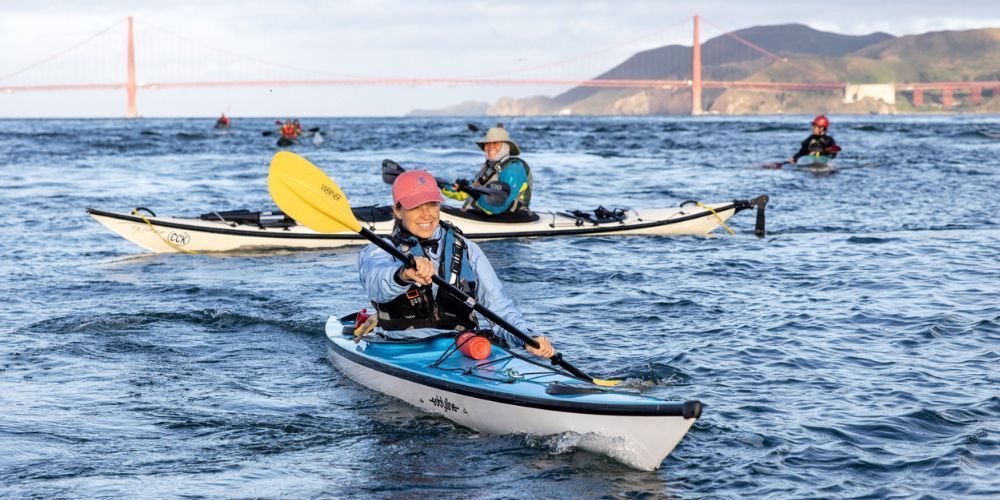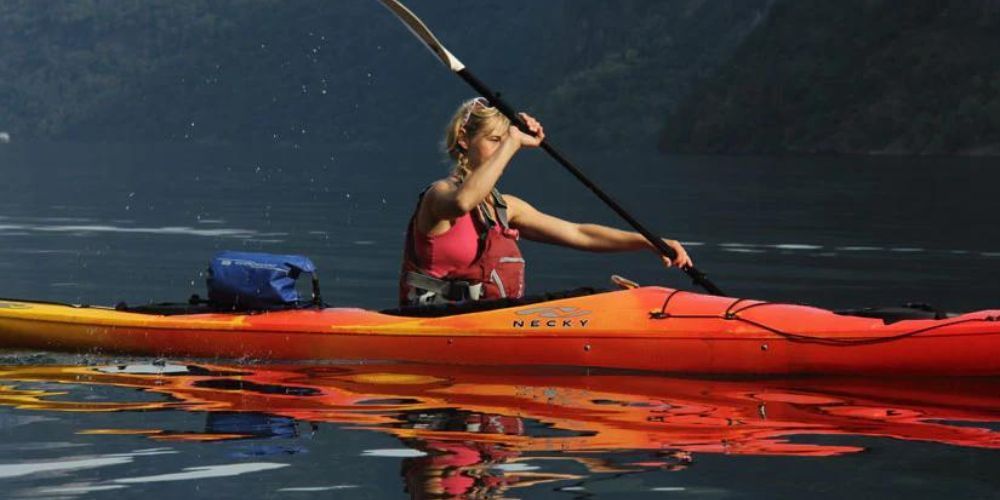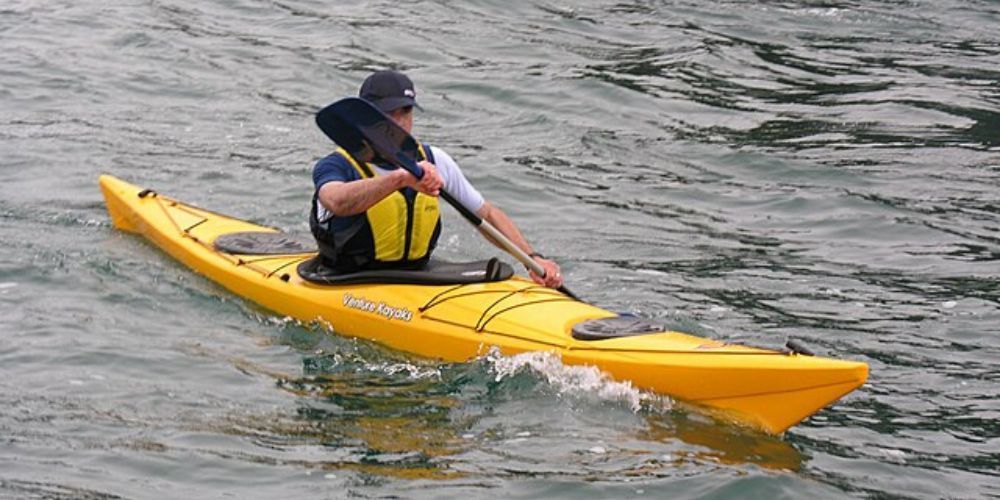Paddling Safely on Open Water: Essential Tips and Techniques for Kayakers and Canoeists
September 5, 2024
Imagine setting off in the early morning, the stillness of open water interrupted only by the soft splash of your paddle. As a dedicated kayaker or canoeist, ensuring safe adventures requires more than just enthusiasm—it demands preparation and know-how. The difference between a serene journey across calm seas and facing unexpected perils hinges on informed decisions about watercraft and equipment.
From selecting a kayak streamlined for cutting through waves to carrying essential safety gear like Personal Flotation Devices and navigation tools, every detail matters. Drawing from countless hours spent navigating various water conditions, this guide compiles expert advice and firsthand experiences to help you paddle confidently. Let's begin by exploring how to choose the right vessel for your adventure.
When paddling on open water, it's crucial to wear a buoyancy aid or personal flotation device at all times, and always inform someone of your plans, including your intended route and return time. Additionally, make sure to check the weather forecast and water conditions before heading out, and consider paddling with a friend or group for added safety.

Choosing the Right Watercraft
When selecting the right watercraft for your paddling adventures, understanding the distinct qualities and capabilities of kayaks and canoes is crucial. The choice between a kayak and a canoe depends on several factors, such as the type of activity you plan to engage in and the prevailing water conditions.
Kayaks are renowned for their streamlined designs, making them superbly adept at maneuvering through waves. Especially sea kayaks, designed for open water excursions, offer superior directional control and efficient navigation through choppy waters. Conversely, canoes are inherently more stable and boast greater storage capacity, making them ideal for carrying gear or multiple passengers. It's essential to match your chosen vessel with your planned activities and the specific characteristics of the body of water you intend to traverse.
Moreover, beyond the broader selection between kayaks and canoes, different types of kayaks cater to diverse paddling experiences. For open water endeavors, sit-in kayaks with closed cockpits are recommended to prevent water ingress and ensure a comfortable, dry ride. Touring kayaks are particularly well-suited for extended journeys on expansive waters due to their efficient performance and superior tracking capabilities. In contrast, sea kayaks are engineered to handle rugged aquatic conditions with finesse, featuring design elements tailored for challenging environments.
Imagine yourself gliding across a vast expanse of open water in a sleek sea kayak, its closed cockpit shielding you from the splashing waves while you cut through the chop as easily as a fish swims through its aquatic domain. Alternatively, picture the stability and generous capacity of a canoe as it gracefully navigates through calmer waters, accommodating substantial gear or providing ample space for companions to share in the adventure.
In addition to considering between kayaks and canoes, it's equally important to understand how hull shape influences pivotal attributes like stability and maneuverability. Let's explore this aspect next.
Essential Safety Gear
Before setting out on any paddling adventure, ensuring you have the essential safety gear is paramount. Here are some key safety items that are vital for your protection and well-being while out on the water:
Personal Flotation Device (PFD)
A Coast Guard-approved PFD is an absolute necessity when paddling on open water. It not only provides buoyancy but can also be a life-saving device in case of an emergency. When choosing a PFD, ensure that it fits snugly and comfortably. Statistics show that PFDs significantly reduce the risk of drowning, making them an indispensable piece of equipment for every paddler.
Whistle or Air Horn
In foggy conditions or situations where you need to alert nearby boats, a whistle or air horn becomes a crucial communication tool. These simple but effective devices can be lifesavers in scenarios where visibility is limited, helping to signal your presence and avoid potential collisions on the water.
Navigation Tools
Carrying essential navigation tools such as a waterproof map, a compass, or a GPS device is fundamental for maintaining your sense of direction and ensuring you stay on course. While technology can be reliable, it's vital to have backups in place to prevent getting lost in unfamiliar waters. Incorporating these tools into your gear provides added security against unforeseen circumstances.
Bilge Pump and Sponge
In the event that your watercraft takes on water, having a bilge pump to quickly remove excess water can be instrumental in preventing capsizing or instability. Additionally, a sponge is invaluable for mopping up smaller amounts of water that may enter your kayak or canoe during your expedition. These items serve as indispensable tools for managing unexpected water ingress and maintaining a safe paddling environment.
When considering safety gear for paddling, each item plays an integral role in mitigating potential risks and enhancing overall safety while navigating open waters. By equipping yourself with these essential safety items, you're not only prioritizing your well-being but also ensuring a more secure and enjoyable paddling experience.
Anticipating environmental factors is just as critical as having the right safety gear. In the next section, we'll explore the importance of monitoring weather conditions before heading out onto open waters.
Monitoring Weather Conditions
When paddling on open water, monitoring the weather is crucial for a safe and enjoyable experience. Checking forecasts before setting off and keeping track of changing weather patterns while paddling can make a world of difference in ensuring your safety.
Checking Forecasts
Before heading out onto open water, it's crucial to check reliable weather forecasts. Utilize apps like Windy or visit websites such as NOAA to stay informed.
Pay close attention to:
- Wind Speeds: Higher wind speeds can make paddling difficult and even lead to unsafe conditions, particularly for kayakers.
- Wave Heights: Understanding the expected wave heights is crucial, as larger waves can pose challenges for stability and control.
- Potential Storms: Keep an eye out for any impending storms or adverse weather conditions that could arise during your trip.
By being aware of these factors, you'll be better prepared to evaluate whether it's safe to venture out on the water or if it's best to postpone your trip for another day.
Understanding Weather Patterns
In addition to checking forecasts, it's essential for paddlers to learn how to read the water and sky. Observing subtle changes in the environment can provide valuable insights into impending weather changes. Pay attention to:
- Temperature Drops: A sudden drop in temperature could indicate an approaching storm or change in weather conditions.
- Wind Shifts: Notice any shifts in wind direction, as they can serve as early indicators of potential storms or significant weather alterations.
- Cloud Formations: Different cloud formations can signify various weather patterns. For instance, dark and ominous clouds may signal an approaching storm, while certain cloud types indicate fair weather.
By honing your ability to interpret these cues, you'll be better equipped to make informed decisions while on the water, potentially averting dangerous situations.
For instance, noticing a sudden drop in temperature and a shift in wind direction could prompt you to anticipate adverse weather conditions and consider altering your route or heading back to shore preemptively, thus prioritizing safety.
With this conscientious approach to monitoring the weather and understanding its signs, you'll be better equipped to recognize potential risks and make proactive decisions while paddling on open water.
As we harness the power of nature's elements, let's now explore techniques for handling waves, ensuring a seamless paddling experience even when waters get rough.

Techniques for Handling Waves
When it comes to paddling in open water, encountering waves is inevitable. It can be both exhilarating and challenging to navigate through them, but with the right techniques, you can manage this like a pro. Let's explore some essential strategies for handling waves while kayaking or canoeing.
Paddling Parallel
When waves come from the side, it's important to paddle parallel to the wave direction. This technique helps maintain balance and prevents the risk of capsizing. By paddling parallel to the waves, you reduce the chances of being broadsided by a wave, maintaining control of your craft.
Imagine a side-on wave as a playful yet unpredictable creature. To avoid getting caught off guard, you'll want to work with it rather than against it. Paddling parallel aligns your kayak or canoe with the wave's movement, allowing you to harmonize with its rhythm. This helps in staying balanced and avoiding the force that can knock you off course.
Surfing Down Waves
Riding a wave can be an exhilarating experience, but it requires skill and precision. To successfully ride a wave, it's important to paddle aggressively into it. As the wave lifts your craft, lean back slightly to keep the bow from diving into the water, using your paddle for stability.
Visualize surfing down a wave as a dance between you, your boat, and the water around you. When done effectively, riding down a wave becomes an art form. Paddling aggressively into the wave enables you to harness its energy and glide along its swell. The subtle shift in weight as you lean back prevents your kayak from burying its bow in the trough of the wave. Your paddle acts as an extra layer of support, helping maintain stability as you surf down the wave's face.
Bracing Techniques
Learning bracing techniques is critical for maintaining stability in wavy conditions. There are two primary bracing techniques: low braces and high braces.
- Low Braces: Involves using the back face of the paddle close to the water surface to provide lateral support and help prevent capsizing in turbulent waters.
- High Braces: Utilizes the shaft of the paddle at chest level to provide vertical support when waves threaten to topple your kayak or canoe over.
It's akin to knowing ballet moves where each step maintains your poise during a complex dance routine. Practicing low and high braces equips you with essential skills for staying upright when faced with challenging waves. These techniques act as your safety net - ensuring that even if things get a little hairy out on the water, you have the tools to maintain control and stability.
By mastering these techniques, paddlers can not only navigate through waves safely but also gain confidence when faced with varying water conditions.
By honing these essential techniques for maneuvering through open water challenges, paddlers can take their skills to new heights. Now, let's dive into refining those skills further in our exploration of "Developing Paddling Skills.

Developing Paddling Skills
Imagine kayaking or canoeing through serene waters, being in complete harmony with the movements of your craft. While it might seem effortless when watching a skilled paddler, mastering these skills requires dedication, practice, and guidance.
One effective way to enhance your capabilities is by joining a local paddling club or seeking the expertise of a certified Paddle UK Delivery Partner. These organizations offer hands-on training sessions, safety instructions, and valuable tips from experienced paddlers. By immersing yourself in this supportive environment, you not only gain confidence on the water but also develop a strong foundation in proper paddling techniques.
For instance, seasoned instructors can provide personalized guidance on refining your paddling form, navigating different water conditions, and executing rescue maneuvers effectively. Additionally, engaging with like-minded individuals can create a network of support and camaraderie, fostering a positive learning environment.
Practice Makes Perfect
To become proficient in kayaking or canoeing, it's imperative to master various paddle strokes. Each stroke serves a distinct purpose and is crucial for maneuvering efficiently across water surfaces. Start by learning and practicing fundamental strokes such as forward strokes for propulsion, sweep strokes for turning, and draw strokes for precise adjustments.
Visualize the entire process: The forward stroke propels your craft smoothly through calm waters, while the sweep stroke enables you to make wide turns or navigate around obstacles. On the other hand, the draw stroke comes in handy for making subtle adjustments and maintaining control during tight maneuvers.
Think of these strokes as the building blocks of your skill set - mastering them lays the foundation for more advanced techniques and ensures better control over your kayak or canoe.
Mastering Stability and Maneuverability
In challenging water conditions such as choppy waves or swift currents, the ability to maintain stability and maneuver effectively becomes paramount. This is where techniques such as edging and leaning prove invaluable.
Edging involves tilting your kayak or canoe slightly to one side to increase stability while turning or navigating through rough waters. It establishes better contact with the water surface, allowing for smoother transitions between strokes and sharper turns.
Similarly, mastering leaning techniques enables you to maintain balance and control in varying conditions. By leaning your body weight to one side of the craft, you can counteract external forces such as waves or currents and navigate through turbulent waters with greater confidence.
Remember, consistent practice of edging and leaning under different conditions will not only enhance your stability and maneuverability but also instill a sense of awareness about how your craft responds to different movements.
By honing these fundamental skills on open water, you're laying a solid foundation for confidently navigating through various challenges. Now let's explore essential tips for handling unexpected emergencies on the water.
Emergency Preparedness Tips
When it comes to paddling on open water, being prepared for any unforeseen circumstances is as essential as mastering your strokes. Here are some invaluable emergency preparedness tips that every kayaker and canoeist should consider before hitting the water.
Float Plan
Informing a friend or family member about your whereabouts and expected return time provides a safety net in case something goes wrong, helping rescuers locate you quickly if needed. A float plan is much like a safety net - when everything goes right, you might not need it, but if things don't go as planned, it can be a lifeline. By outlining where you're going and when you'll be back, you're giving someone you trust the information they need to alert authorities if necessary.
Carry a VHF Radio
Having a VHF radio can be absolutely essential for communicating with the Coast Guard or other boats in case of an emergency. While mobile phones may falter due to the lack of reception in remote areas, a VHF radio ensures that you have a means of communication even in the most isolated locations. If your group experiences unexpected trouble and needs immediate assistance, a VHF radio can make a significant difference.
Capsize Drills
Regularly practicing self-rescue techniques like re-entering from the water or performing an Eskimo roll in safe, controlled environments is vital for every paddler's safety arsenal. By honing your capsize drills in advance, you'll be better prepared to handle an unexpected event with confidence.
First-Aid Kit
Carrying a waterproof first-aid kit containing essentials like bandages, antiseptics, and emergency blankets is indispensable for any paddling expedition. Having a well-equipped first-aid kit readily available ensures that you can offer immediate assistance, significantly reducing the impact of an unforeseen emergency until professional help reaches you.
Incorporating these emergency preparedness tips into your routine ensures that every paddling journey is undertaken with utmost caution and preparedness for any potential hazards that may arise.
With these critical emergency preparedness measures at your disposal, you can approach your paddling adventures with confidence, knowing that you are well-prepared to navigate unforeseen challenges. Stay safe and enjoy the waters responsibly.
What safety gear is essential for paddling on open water?
When paddling on open water, it’s crucial to have the right safety gear. Essential items include a properly fitted Personal Flotation Device (PFD) for every paddler, a whistle or signaling device to attract attention if needed, and a paddle leash to prevent losing your paddle in rough conditions. Additionally, carrying a bilge pump or sponge can help manage water inside your kayak or canoe, and a first-aid kit is a must for handling minor injuries. It’s also wise to carry a waterproof map, a compass, or a GPS device to avoid getting lost, especially in unfamiliar waters. Lastly, a VHF radio or mobile phone in a waterproof case ensures you can call for help if needed.
How can I prepare for changing weather conditions while kayaking or canoeing?
Preparing for changing weather conditions is vital for safe open water paddling. Before heading out, always check the weather forecast and understand that conditions can change rapidly, especially on large bodies of water. Dress in layers using moisture-wicking and quick-drying materials, and bring a waterproof jacket to protect against rain and wind. Pack extra clothing in a dry bag in case you get wet. Always plan your route with potential shelter points in mind, such as coves or islands, where you can take refuge if a storm arises. Keep an eye on the sky, and if you notice dark clouds, sudden temperature drops, or increasing wind speeds, consider heading back to shore.
What techniques can help me stay safe if my kayak or canoe capsizes?
If your kayak or canoe capsizes, staying calm is the first step to ensuring your safety. Practice wet exit techniques regularly so you’re prepared in case of a capsize. If you’re kayaking, try the “Eskimo roll” to right yourself if you’re confident in your skills. If you’re unable to roll, focus on exiting the kayak safely and hold onto your paddle. For both kayaks and canoes, it’s important to stay with your vessel, as it’s easier to spot from a distance. If you’re close to shore, swim the boat to shallow water, where you can re-enter or empty it. In deeper water, practice self-rescue techniques like the paddle float rescue or the T-rescue, where another paddler assists in stabilizing your boat while you re-enter. Having a paddle float and practicing these rescues in calm water beforehand can significantly improve your chances of successfully recovering from a capsize.
Check out the latest guides on kayaking gear
Author: William Flaiz










